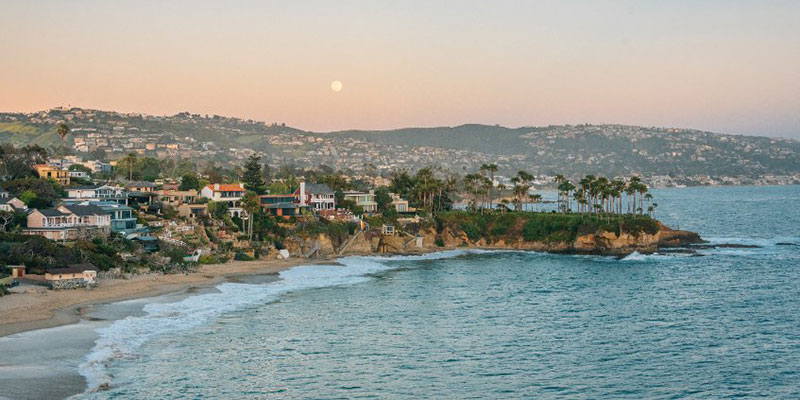In California, a growing population and thriving agricultural industry are placing an increased demand on dwindling water resources, particularly during times of drought.
Solutions like desalination and water reuse can help the arid state achieve water sustainability
California has a Mediterranean climate, characterized by hot, dry summers and mild, wet winters. But climate change has resulted in uncertain water supplies and prolonged periods of drought, which in turn has led to water scarcity across the state.
While water supply has diminished, water demand has not. To manage water resources sustainably, it’s imperative to balance the two. This poses a challenge for California, whose growing population and thriving agricultural industry are placing an increased demand on dwindling water resources, which is exacerbated during times of drought.
The state has had to deal with aging infrastructure and ongoing water-quality issues, and also has had to consider future climate change impacts in its water management strategy. These issues often go hand-in-hand.
For example, the increased risk of wildfires associated with climate change poses an increased risk of pollution of surface waters, which in turn can cause widespread contamination of local drinking water distribution networks.
Water Strategies
A 2016 report, “Sustainable Water Strategies for California,” suggests a range of strategies to help achieve water sustainability by balancing water supply with water demand. These include:
- Diversifying water supplies by using innovative technologies including desalination and water reuse to develop new sources of water
- Strategically improving current water delivery networks and underground storage capacity
- Developing and implementing a statewide water infrastructure asset management plan
- Measuring snow-pack across entire watersheds rather than at a single point
It also suggests ways to improve water efficiency, for example, implementing price-based incentives in urban areas, and providing financial incentives in the agricultural sector.
The report also recommends prioritizing policies and incentives to equip disadvantaged communities with resources to ensure a sustainable water supply. The report discusses ways to optimize local and regional water supplies by strengthening local ordinances, streamlining permitting of regional water projects, and developing water-recycling projects to meet state goals for direct potable use.
Water Plan Goals and Actions
Over the years, California has put forth several plans, including the legally mandated California Water Plan, which has been revised every five years for decades. In recent years, parallel state efforts have included the California Water Action Plan and the Water Resilience Portfolio.
The state’s main goals are ensuring a reliable water supply, restoring key wildlife species and habitats, and developing a sustainable water resource system that is more resilient to future pressures such as climate change, and population and economic growth.
The actions outlined below are the key strategies that are being proposed to help achieve the objectives of the California Water Action Plan:
- Make conservation a California way of life
- Increase regional self-reliance and integrated water management across all levels of government
- Achieve the co-equal goals for the Delta
- Protect and restore important ecosystems
- Manage and prepare for dry periods
- Expand water storage capacity and improve groundwater management
- Provide safe water for all communities
- Increase flood protection
- Increase operational and regulatory efficiency
- Identify sustainable and integrated financing opportunities
What are some of the ways California can act to make these strategies a reality?
Desalination and Water Reuse
Since California has a long coastline, desalination is one feasible solution. Fluence supplies small to medium-sized decentralized desalination plants — NIROBOX™ and NIROFLEX — that can provide a cost-effective and viable source of fresh water for a variety of needs, including drinking water.
One solution that addresses all of the goals and several of the actions listed in the California Water Action Plan is to increase water reuse.
Wherever water is used — industries, farms, recreational facilities, private homes, and communities — wastewater is generated. At the very least, wastewater should be treated sufficiently so that it can be safely released back into the environment. However, further treatment can ensure a reliable supply of water and significantly reduce the pressure on dwindling supplies of fresh water, protecting the environment and building resilience by improving water security.
Wastewater can be treated to a quality that allows us to reuse the treated water as a source of nonpotable water for cooling and cleaning, as well as for irrigating crops and landscaping. It can be used as an indirect source of potable water by recharging groundwater in aquifers, and even as a direct source of potable water.
Recycling wastewater to drinking water quality is not only completely feasible with Fluence’s advanced wastewater treatment technologies, such as membrane aerated biofilm reactor (MABR) and anaerobic membrane bioreactors (An-MBR), it offers a cost-, energy-, and water-efficient solution for improving California’s water sustainability. Instead of viewing wastewater as a waste product, we should change our perspective and view it as a valuable resource.
For more information about meeting California’s water goals, contact Fluence. Our Water Management Services can even deliver the water you need with no upfront infrastructure investment or maintenance costs.

